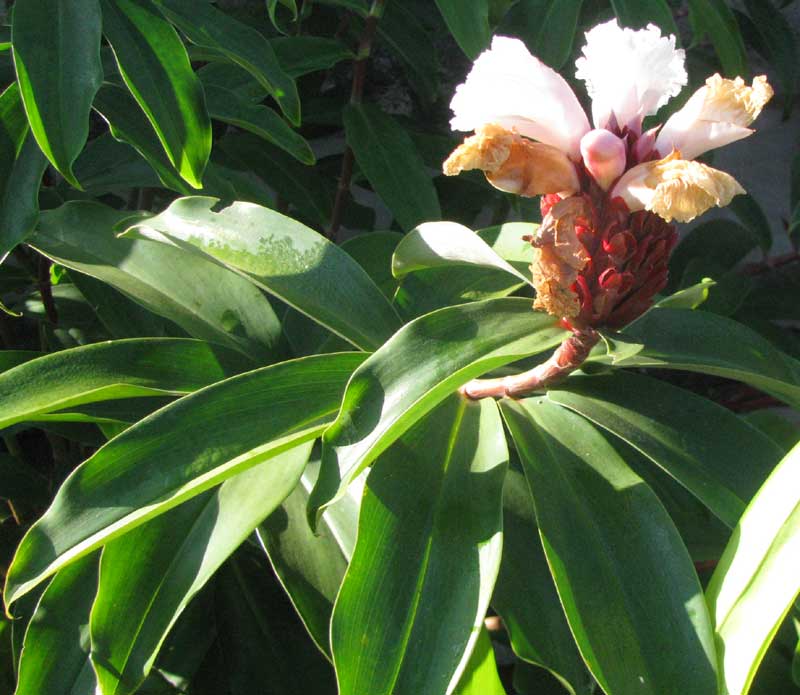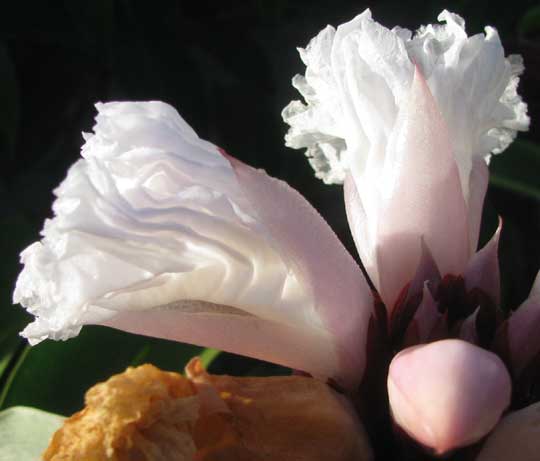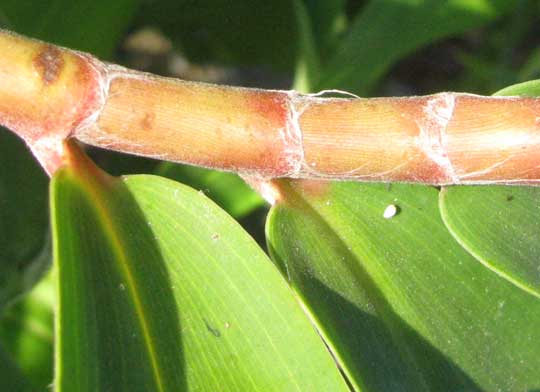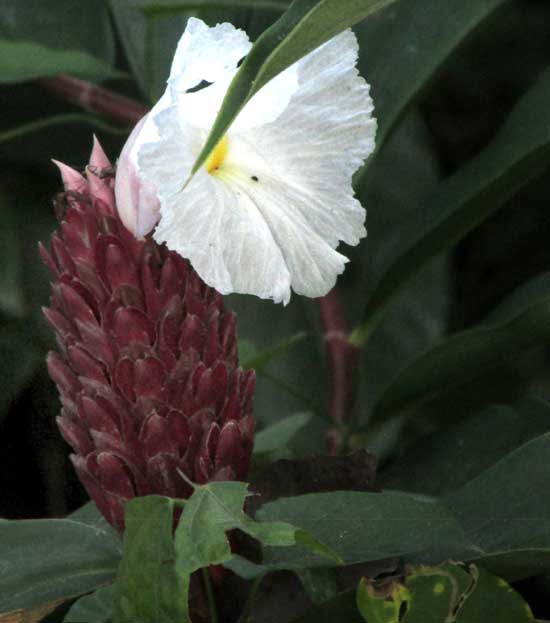Excerpts from Jim Conrad's
Naturalist Newsletter

from the January 15, 2012 Newsletter issued from Hacienda Chichen Resort beside Chichén Itzá Ruins; limestone bedrock; elevation ~39m (~128ft), N20.675°, W88.569°; central Yucatán state, MÉXICO
CREPE GINGER
A close-up of the above plant's white flowers, with their crinkled corollas said to look as if made from crepe paper, is shown below:

These are pictures of the Crepe Ginger, COSTUS SPECIOSUS, native to Southeast Asia and many Pacific Islands, especially the islands of Indonesia. It's become an invasive on other Pacific Islands, including the Cook Islands, Fiji and Hawaii where it lives in low-lying forests and the wet bottoms of roadside ditches.
Long after the Crepe Ginger's flowers fade, the red, cone-like clusters of bracts from which the blossoms earlier arose remain atop the stem, continuing to put on a show. Several cultivars have been developed from the species, including 'Variegatus' with green and white variegated leaves, 'Pink Shadow' with the white flowers blushed with pink, and the 'Nova,' which is shorter and with lighter-green foliage.
Traditionally Crepe Ginger's rhizome has been used medicinally to treat fever, rash, asthma, bronchitis and intestinal worms. The ancient Indian literary classic, the Kama Sutra, says of the Cape Ginger that "If a fine powder is made of the above plants, and applied to the wick of a lamp, which is made to burn with the oil of blue vitrol, the black pigment or lamp black produced therefrom, when applied to the eyelashes, has the effect of making a person look lovely."
During my student years Crepe Gingers were regarded as members of the Ginger Family, along with the above Ginger Lily, but today many experts place them in their own family, the Costus Family, or Costaceae. Some authors also shift the species into the genus Cheilocosus.
An interesting feature of Crepe Gingers is that their stem leaves arise along one side of the stems instead of alternating sides, as with most plants with only one leaf per stem node. A close-up showing the effect is shown below:

Some cultures apparently use the roots as a spice, as they would regular ginger roots, but they're considered to be inferior to regular ginger root.
from the November 30, 2018 Newsletter with notes from a camping trip into Chiapas, the southernmost state of MÉXICO
CREPE GINGER FLOWER'S YELLOW SPOT
Last October 4th as I hiked from the ruins of Palenque to the town of Palenque, in Chiapas state, in a moist place in deep shade among bushes along the road, something white caught my attention. It was the big flower shown below:

At first, because it occurred in such an overgrown spot, I thought it must be a wild plant, but gradually it sank in that we'd met this flower before, planted as an ornamental at Hacienda Chichen in the Yucatan, profiled above.
Still, when I photographed the Yucatan plants, somehow I failed to illustrate the yellow spot so evident in the Chiapas flower's center, so now we have a good shot of that.